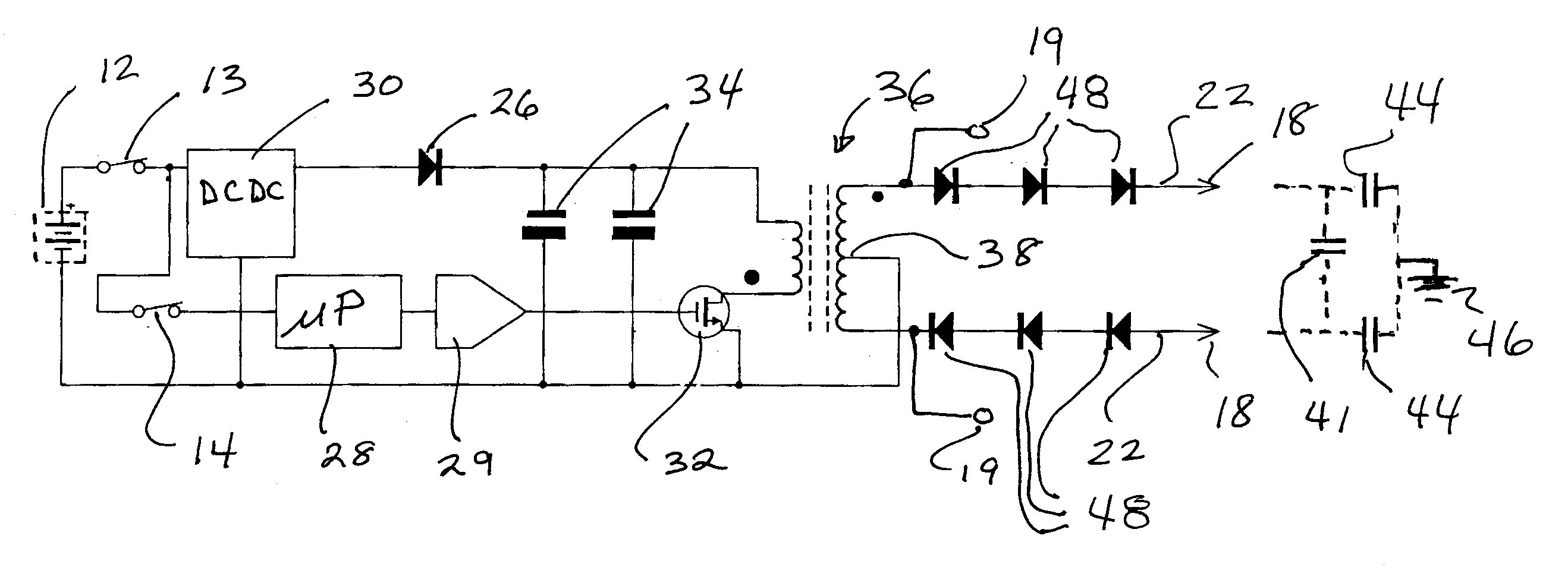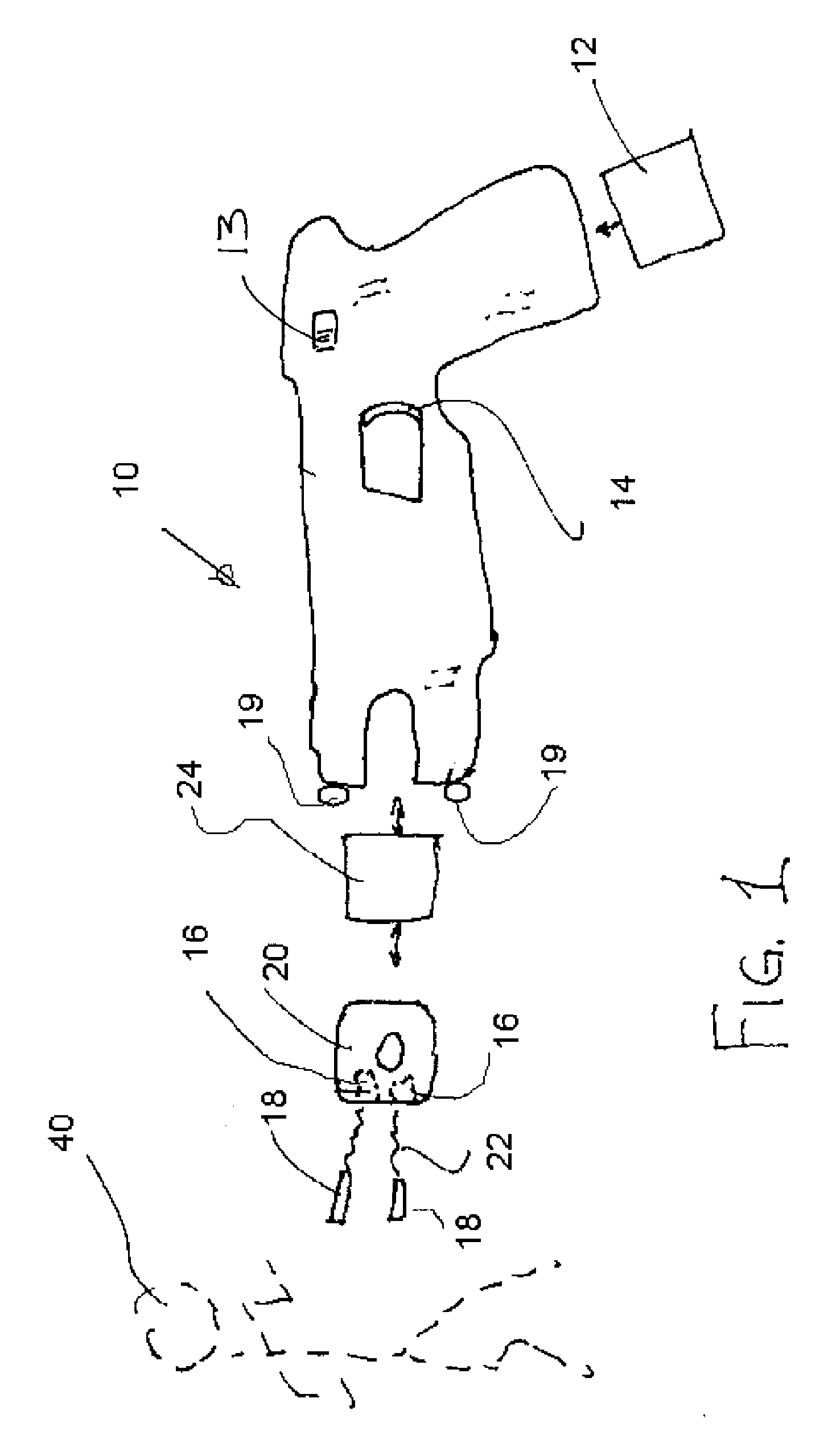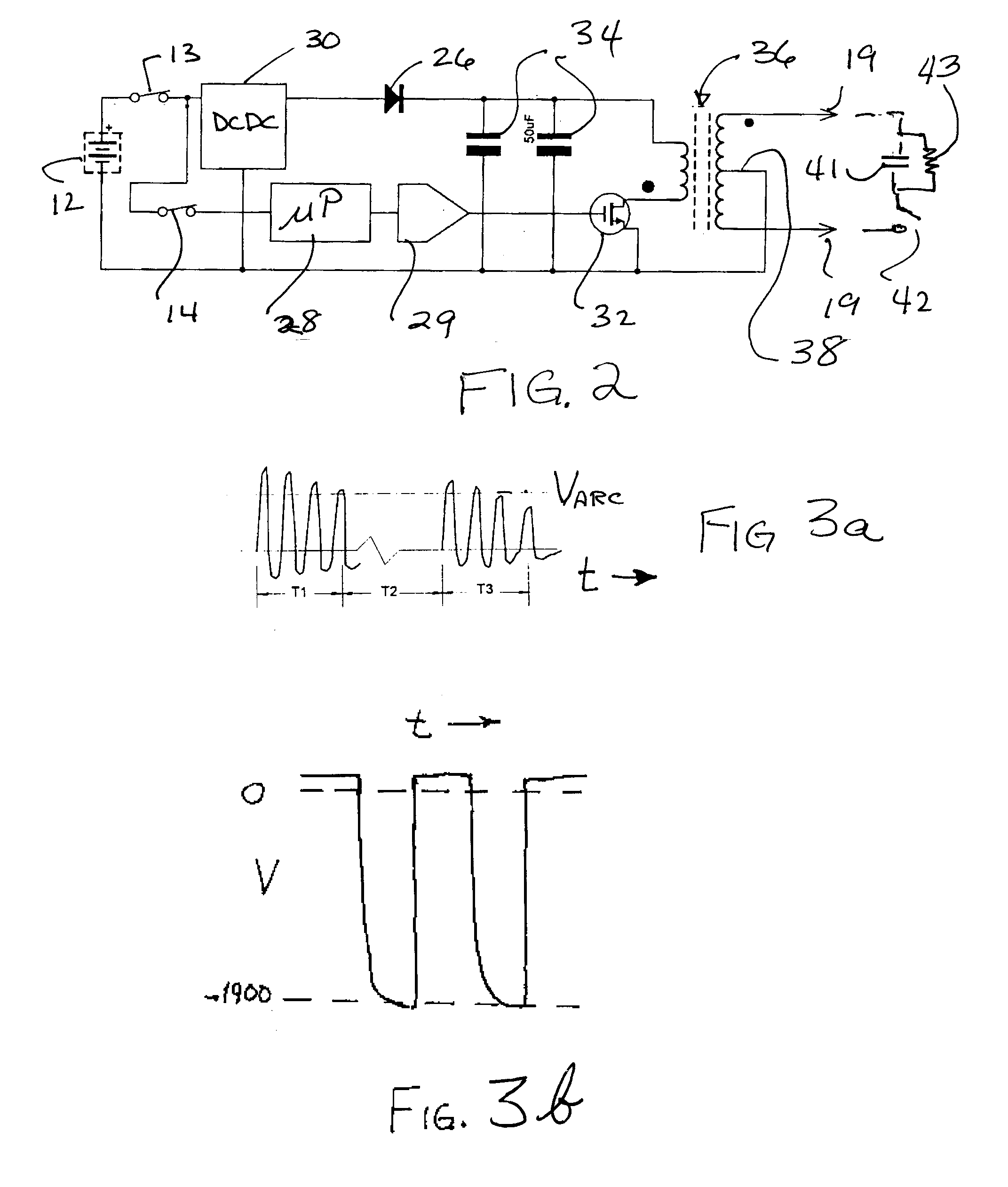Electric Disabling Device with Controlled Immobilizing Pulse Widths
a technology of immobilizing pulse width and electric disabling device, which is applied in the direction of ammunition projectiles, transportation and packaging, weapons, etc., can solve the problems of delivering an incapacitating electric shock, unable to be incapacitated, and shock may be lethal, so as to achieve optimal immobilizing duty cycle, reduce total energy, and incapacitate nerve tissue.
- Summary
- Abstract
- Description
- Claims
- Application Information
AI Technical Summary
Benefits of technology
Problems solved by technology
Method used
Image
Examples
Embodiment Construction
[0022]In studying this Detailed Description, the reader may be aided by noting definitions of certain words and phrases used throughout this patent document. Wherever those definitions are provided, those of ordinary skill in the art should understand that in many, if not most instances, such definitions apply to both preceding and following uses of such defined words and phrases. At the outset of this Description, one may note that the terms “include” and “comprise,” as well as derivatives thereof, mean inclusion without limitation; the term “or,” is inclusive, meaning and / or. Moreover, inasmuch as the preferred embodiment described herein involves controlled capacitive storage of electrical charge and subsequent discharge of it, it should be noted that the term ‘capacitor’ is sometimes used herein to denote either or both of a single physical component and various combinations of such components that can be viewed as being equivalent to a single capacitive component. In particular...
PUM
 Login to View More
Login to View More Abstract
Description
Claims
Application Information
 Login to View More
Login to View More - R&D Engineer
- R&D Manager
- IP Professional
- Industry Leading Data Capabilities
- Powerful AI technology
- Patent DNA Extraction
Browse by: Latest US Patents, China's latest patents, Technical Efficacy Thesaurus, Application Domain, Technology Topic, Popular Technical Reports.
© 2024 PatSnap. All rights reserved.Legal|Privacy policy|Modern Slavery Act Transparency Statement|Sitemap|About US| Contact US: help@patsnap.com










